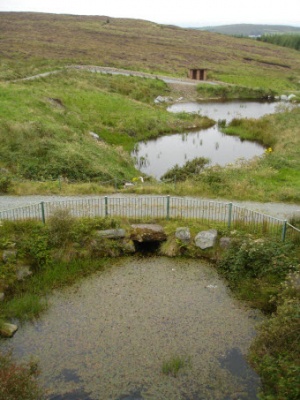Using Science to Support Biodiversity
Lesson idea. This tutorial drives work around a National Park, where student activities might cause damage. A research phase explains what is a National park is and we then go on to design an investigation to measure the distribution of plant species across a path. This involves a line transect and an interrupted belt transect which are compared in some detail. Sample results and questions are provided.
Teaching approach. This is an investigation(ta) in a virtual field trip to Dartmoor National Park. It involves research, designing a scientific investigation and analysing the results. (edit)
| Resource details | |
| Title | Using Science to Support Biodiversity |
| Topic | [[Topics/Biodiversity|Biodiversity]] |
| Teaching approach | [[Teaching Approaches/Investigation|Investigation]] |
| Learning Objectives | Students consider some of the issues that arise when scientists monitor the environment to detect changes in biodiversity. They will then gain the experience and understanding to carry out work in their local area. |
| Format / structure | Tutorial with web links to explore |
| Subject | [[Resources/Biology|Biology]], [[Resources/Science|Science]] |
| Age of students / grade | [[Resources/KS5|KS5]], [[Resources/Secondary|Secondary]]
|
| Files and resources to view and download | The BioEthics Education Project site: http://www.beep.ac.uk/content/592.0.html
|
This project will allow you to consider some of the issues that arise when scientists monitor the environment to detect changes in biodiversity. You will then have the experience and understanding to carry out your own work in your ‘local’ area. The project is based around an example taken from a National Park, where some of activities might damage footpaths, leading to the loss of biodiversity and in extreme cases, soil erosion. There are a number of stages, and you can complete as many of these as you wish.
- Research: setting the scene and understanding the principles and dilemmas.
- Designing the scientific investigation.
- How to carry out the investigation.
- Handling, analysing and using the results.
- Some wider thoughts on how you can act and be involved in ‘local’ action.
Rationale
This online activity for A level Biology students comprises resources to support a virtual investigation based on a field trip to the Dartmoor National Park. It is intended to engage the students both in discussion about and investigation of the conflicting natural science issues such as biodiversity that have to be considered when managing a national park so that it is attractive to both wildlife and people. Background reading, photographs and interactive dioramas are used, together with word frames, scaffolds and open-ended questions, to stimulate students' ideas for a scientific investigation into the impact of national park visitors on its biodiversity.
The virtual investigation itself centres on ways of using transects to collect data on plant species in heavily visited areas of the park. Exemplar data is provided for students together with prompts suggesting ways of analysing it. A class teacher could therefore use the virtual investigation as homework to prepare students for the activities that will need to be planned for their own field trip or use it in class with small groups to replace a field trip. Once the analysis is completed students are reminded that the purpose of the investigation was to inform the National Park conservationists about any possible losses in biodiversity resulting from footpath erosion. A range of possible follow-up activities are suggested to stimulate further discussion and/or action. Finally, students are encouraged to identify ways in which they could conduct a similar investigation locally.



